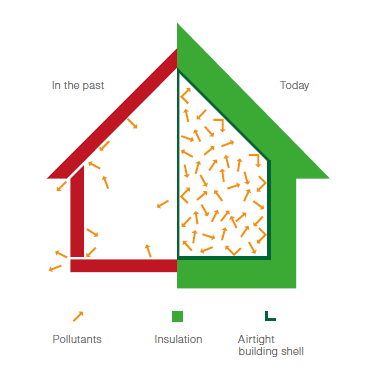|
As we spend 90% of our life indoors (source: Sentinel Haus Institut 2014), it is
important to be able to rely on a healthy living environment. The HT coating
(Hydrophilic Tile) offered by Deutsche Steinzeug makes a significant contribution to
healthy living environments:
- It impedes growth by mould, bacteria and other microorganisms.
- It facilitates cleaning of the surface.
- It helps to decompose pollutants in the air such as formaldehyde and
indoor odours.
And all of this simply through the effects of light!
Titandioxid (TiO2) is burned insolubly and permanently into the ceramic
surface at a high temperature. As a permanent catalyst, it triggers a practically
life-long reaction activated by light (photocatalysis) with oxygen and humidity.
This gives rise to activated oxygen and a hydrophilic, water-friendly ceramic
surface.
Commitments to energy-efficient buildings have led to increasingly dense building
shells in the past few years, preventing odours and pollutants from dissipating
outwards. While planning and designing interior areas, the aim is therefore to avoid
substances which are harmful to health and make intelligent selections with regard
to the materials used indoors. But building materials are not the only culprits when
it comes to indoor air pollution. Floor coverings, installation materials and
furniture can also be responsible for increasing concentrations of volatile organic
compounds (VOC) in hermetically sealed buildings. Architects and planners can
counteract these side effects using HT.
|

|






